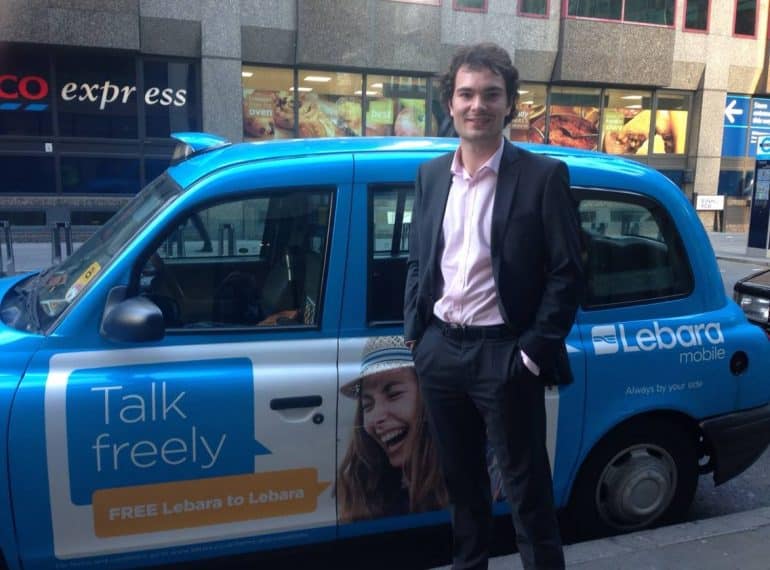
After graduating from Cambridge in 2013, Charlie Scutt has gone on to build a successful career with a company dedicated to meeting the needs of economic migrants worldwide.
Charlie (OE 2003–2010) works for London-based Lebara, where he relishes his “funky” role as a Scrum Master & Delivery Manager. The company is known principally as a telecommunications company, although Charlie’s work has mainly been in its money transfer business.
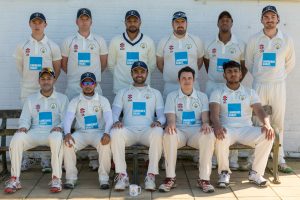 While at university, he was Girton College Cricket Club First XI captain. He has continued playing since, and three years ago made the move from his childhood club, Potters Bar CC, to the thriving Old Elizabethans CC, where he is a wicketkeeper. He is pictured here (back row, far right) with the current Old Elizabethans First XI. The vice captain (Front Row, Second from the right) is OE Paul Lissowski, who was in the year above Charlie.
While at university, he was Girton College Cricket Club First XI captain. He has continued playing since, and three years ago made the move from his childhood club, Potters Bar CC, to the thriving Old Elizabethans CC, where he is a wicketkeeper. He is pictured here (back row, far right) with the current Old Elizabethans First XI. The vice captain (Front Row, Second from the right) is OE Paul Lissowski, who was in the year above Charlie.
“I left QE in 2010 to study Geography at Cambridge, and without the support and guidance from the School – in particular Mr Enright [now Headmaster Neil Enright] and Mrs Macdonald [now Assistant Head Anne Macdonald] – that certainly wouldn’t have been possible,” says Charlie. “The reason I chose to do Geography was quite simply it was the subject I enjoyed the most.
“I like the fact that Geography covers a very diverse range of areas and have always seen myself as somewhat of a ‘generalist’. Choosing it for my degree made perfect sense as it gave me the flexibility to continue learning about a breadth of topics. I certainly didn’t have my future career in mind at this point and by no means had my future planned out (or even do to this day if I’m totally honest!). My goal has always been to try to do what I enjoy, but make sure I do it to the best of my ability!
“My three years in Cambridge were brilliant and I particularly enjoyed the college system whereby your college acts almost as your family away from home. Whilst the academic side of Cambridge was undoubtedly tough it was hugely rewarding, and it wasn’t all work.
“There was more than enough time to have a great social life and play a lot of sport. I played football (badly!) for my college and also played cricket for the university in my second and third years, mainly for the university Second XI although I did manage one appearance for the Cambridge University Blues (First XI) in my final year.”
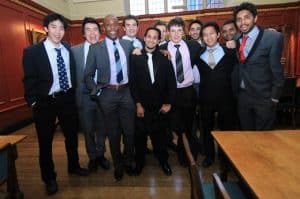 Charlie is pictured here, fourth from left, with a group of OEs who went to Cambridge with him. They arranged this reunion dinner in 2013, when he was in his third year.
Charlie is pictured here, fourth from left, with a group of OEs who went to Cambridge with him. They arranged this reunion dinner in 2013, when he was in his third year.
“After leaving Cambridge I was none-the-wiser on where I wanted to go career-wise, so spent the summer trying to navigate the baffling world of graduate jobs!” After receiving offers from a number of companies, he eventually decided to join Lebara on a six-month internship, choosing the company because it offered a broad role which suited his generalist mindset. “It turned out to be quite a good decision as I’m still there five years later!”
Throughout that time he has fulfilled a number of roles for the telecoms company. “Alongside the ability to call home, one of the next most significant needs of, in particular, economic migrants is the ability to send money home. From this idea, Lebara Money was born. Working as part of the Lebara Money team was a great experience as, whilst Lebara is a large established company, the Money team always acted as a semi-autonomous business unit; a ‘start-up’ within a larger organisation and, in my opinion, the best of both worlds.
“The goal was to provide an easy and secure way to send money home online, via web or mobile app. I worked on this product for four-and-a-half years, starting off in Operations Management (helping to manage customer services, fraud prevention, minor maintenance updates to the website etc) before transitioning into Project Management.
“I have increasingly focused on the technology aspects of the business though Delivery Management and (the funkily named) Scrum Mastering. This latest role essentially involves managing the end-to-end delivery of all ‘technology’ elements of the business. Having not come from a typical ‘tech’ background, this was an interesting challenge, but one I thoroughly enjoyed.
“I particularly enjoy the ‘Scrum Master’ element, which essentially means managing your team in a manner whereby, rather than planning all the details of a project months or years in advance, you break everything down into small iterations and focus solely on what needs to be done over the next week or two. At the end of each iteration (referred to as a ‘sprint’) you then review what you have built and your original goals, then adapt your goals for the next ‘sprint’ based on what you have learned from the previous one. This ensures continuous learning, greater ability to adapt to change and ultimately a more agile team than you would have using traditional long-term project management methodologies where the end goal – perhaps a year or more down the line – is defined on day 1.
“Methodologies such as ‘scrum’, which focus on making a team more agile, have now become the go-to way of managing software development teams across most industries, with everyone from banks to video game developers looking to roll it out (with varying degrees of success!).
“I would never have expected my career to have evolved in the way it has and it certainly shows you don’t need to do Computer Science, Software Engineering or another ‘tech’-focused degree to end up working in the technology sector.”
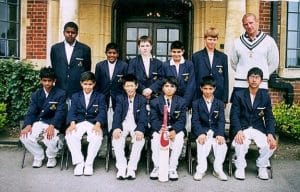 Outside of work, his decision to switch to Old Elizabethans CC has, he says, proved to be a fruitful one, as “two promotions in three years see the First XI playing the highest level of cricket in the club’s history”. Charlie is pictured here, back row centre, in his Year 7 cricket photo at QE.
Outside of work, his decision to switch to Old Elizabethans CC has, he says, proved to be a fruitful one, as “two promotions in three years see the First XI playing the highest level of cricket in the club’s history”. Charlie is pictured here, back row centre, in his Year 7 cricket photo at QE.
“The club also runs highly successful Second, Third and Sunday XIs, alongside a flourishing Colts setup for kids aged 11-17, which means there are opportunities regardless of your age or ability. I’d encourage any cricketers at QE to consider joining Old Elizabethans CC as it offers a perfect opportunity for students to supplement the coaching they receive at School. It also provides the chance to continue playing regular cricket after the School season finishes each year in early July and then even into their adult life once they have left QE.”

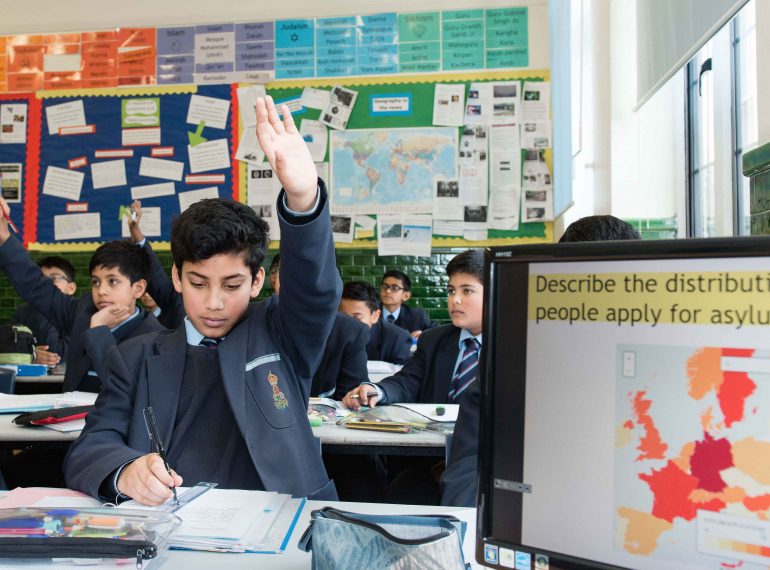
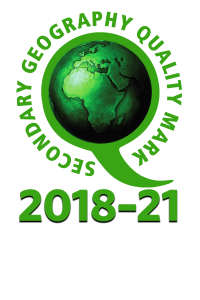 The Geographical Association announced that QE is among a select group of schools from across the country to receive the Secondary Geography Quality Mark (SGQM) for 2018–21.
The Geographical Association announced that QE is among a select group of schools from across the country to receive the Secondary Geography Quality Mark (SGQM) for 2018–21.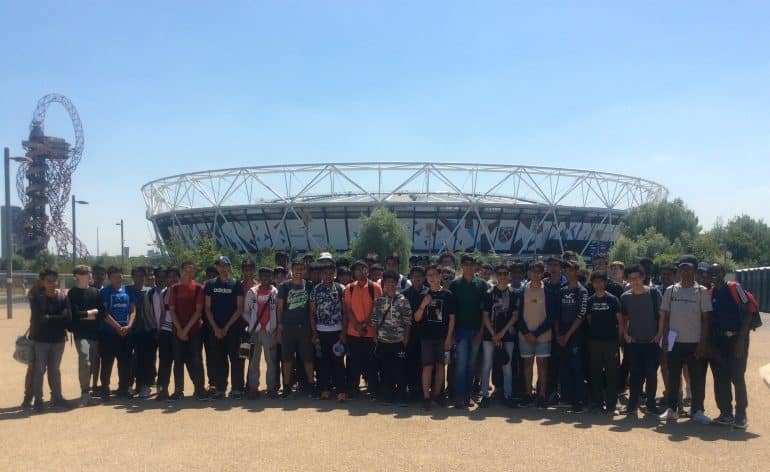
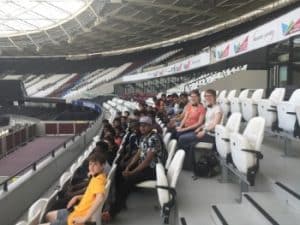 The visit was split into two groups over two days, with each half of the large AQA Geography GCSE cohort spending a full day conducting fieldwork. The boys applied four fieldwork techniques in East Village, a new residential district which was the athletes’ village in the 2012 Olympic Games:
The visit was split into two groups over two days, with each half of the large AQA Geography GCSE cohort spending a full day conducting fieldwork. The boys applied four fieldwork techniques in East Village, a new residential district which was the athletes’ village in the 2012 Olympic Games: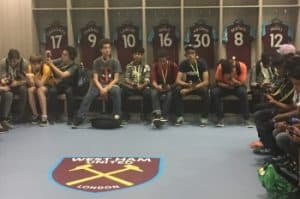 In the afternoon, they had a part-guided, part-multi-media tour of the 60,000-capacity London Stadium (the former Olympic Stadium). The tour looked both at the development of the stadium and at the history of the football club.
In the afternoon, they had a part-guided, part-multi-media tour of the 60,000-capacity London Stadium (the former Olympic Stadium). The tour looked both at the development of the stadium and at the history of the football club.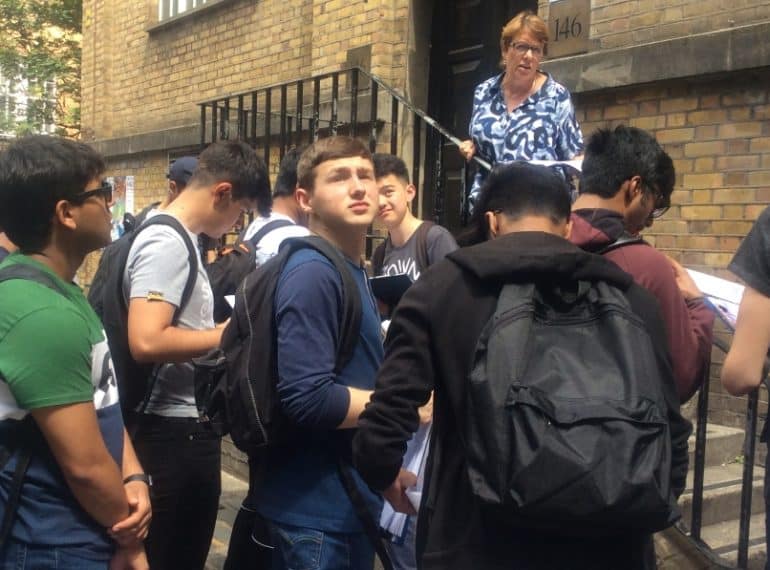
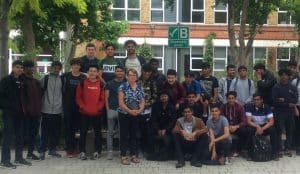 Head of Geography Emily Parry said: “These two guided fieldwork days are carefully structured to assist the boys in selecting their chosen topic for investigation.”
Head of Geography Emily Parry said: “These two guided fieldwork days are carefully structured to assist the boys in selecting their chosen topic for investigation.”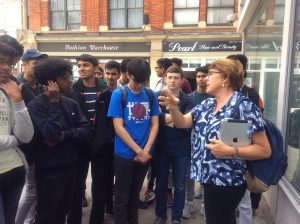 The previous day in Stratford was led by Carlo Roberts from Urban Geography East London, an organisation offering Geography fieldwork programmes. Comparisons were made between the postcodes of E15 and E20 (the new postcode for East Village, which was the Athletes’ Village during the Olympics). Qualitative fieldwork techniques including environmental quality surveys, questionnaires and land-use mapping were conducted.
The previous day in Stratford was led by Carlo Roberts from Urban Geography East London, an organisation offering Geography fieldwork programmes. Comparisons were made between the postcodes of E15 and E20 (the new postcode for East Village, which was the Athletes’ Village during the Olympics). Qualitative fieldwork techniques including environmental quality surveys, questionnaires and land-use mapping were conducted.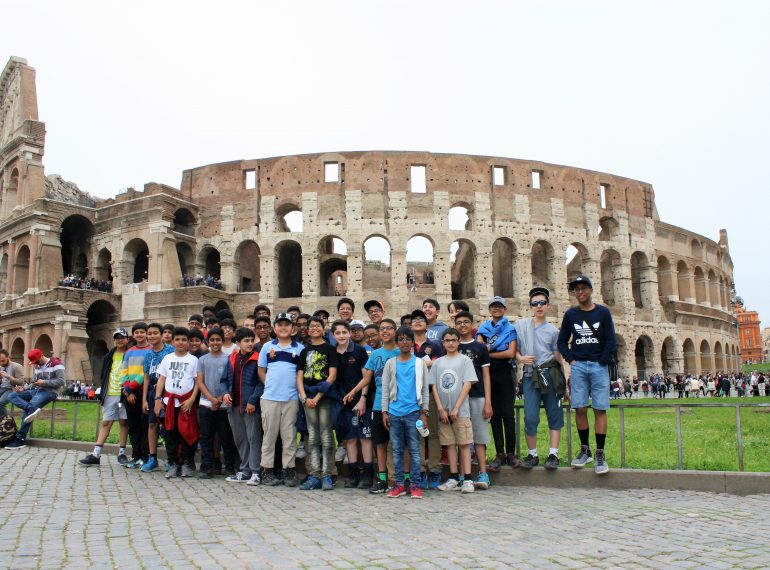
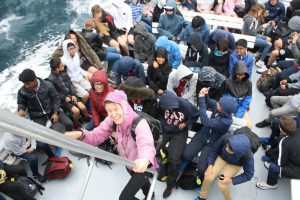 The trip began with a boat ride to the scenic island of Capri, where many of the rich and famous own holiday homes. (“Unfortunately, we didn’t meet George Clooney,” said Miss Cottingham.) On their walk around the island, the boys had a close-up view of an old sea arch which has risen more than 30m because of tectonic uplift and now stands suspended high above the sea.
The trip began with a boat ride to the scenic island of Capri, where many of the rich and famous own holiday homes. (“Unfortunately, we didn’t meet George Clooney,” said Miss Cottingham.) On their walk around the island, the boys had a close-up view of an old sea arch which has risen more than 30m because of tectonic uplift and now stands suspended high above the sea.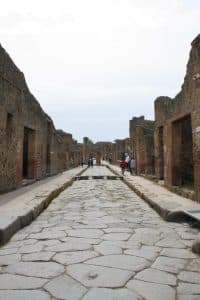 The third day brought a coach ride to the Temple of Serapis in Pozzuoli and the chance to scramble through the caves beneath nearby Naples – another highlight for many of the boys, Miss Cottingham reports. “Our guide told us about the history of the caves, which were once an ancient Roman aquifer before becoming bomb shelters during World War II. The boys were able to appreciate the utter darkness and how narrow some of the tunnels were.”
The third day brought a coach ride to the Temple of Serapis in Pozzuoli and the chance to scramble through the caves beneath nearby Naples – another highlight for many of the boys, Miss Cottingham reports. “Our guide told us about the history of the caves, which were once an ancient Roman aquifer before becoming bomb shelters during World War II. The boys were able to appreciate the utter darkness and how narrow some of the tunnels were.”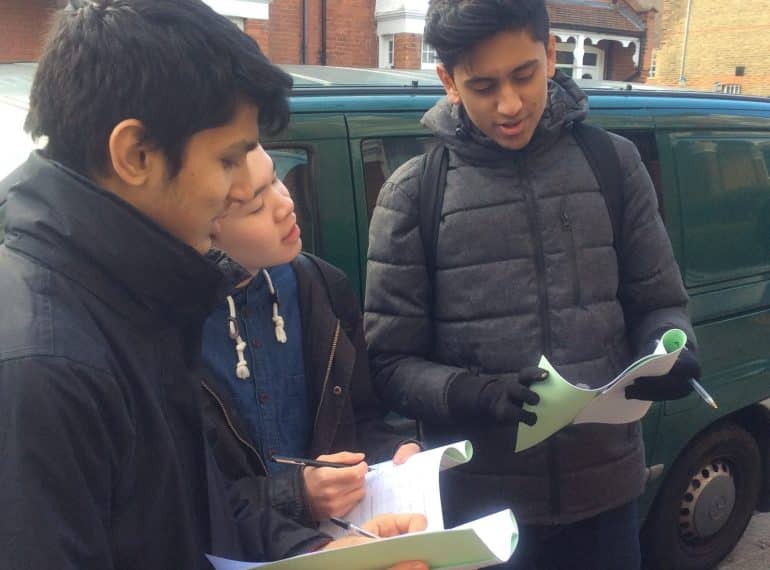
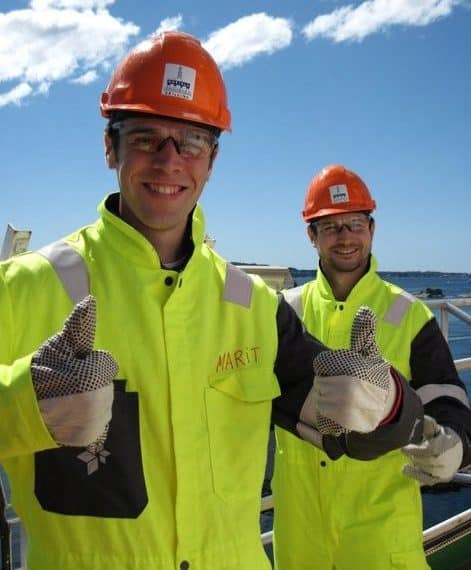
 His fascination for geology first took root while he was studying it as part of his Geography GCSE. “Whilst I was studying for my A-levels, I discussed this interest with a number of teachers, who helped me identify ways of exploring the discipline further outside of QE. I took it upon myself, with help from others, to go to local geological societies to explore more about the subject.”
His fascination for geology first took root while he was studying it as part of his Geography GCSE. “Whilst I was studying for my A-levels, I discussed this interest with a number of teachers, who helped me identify ways of exploring the discipline further outside of QE. I took it upon myself, with help from others, to go to local geological societies to explore more about the subject.” He then worked for a coal-mining company based in Australia for a year, before taking an internship with Statoil in Norway. In 2009, Nicholas returned to education to study for a PhD at Imperial College London, which he completed four years later.
He then worked for a coal-mining company based in Australia for a year, before taking an internship with Statoil in Norway. In 2009, Nicholas returned to education to study for a PhD at Imperial College London, which he completed four years later. Geography teacher Helen Davies said: “It is fantastic to be able to offer our boys the opportunity to visit such exciting and unique environments as Iceland. Throughout the trip, we heard many of the boys applying knowledge they had learnt back in the classroom at School to help them to explain the features that they could see in front of them in the field. They were clearly engaged with the subject matter, as well as having a wonderful time enjoying themselves and getting out in the great outdoors.”
Geography teacher Helen Davies said: “It is fantastic to be able to offer our boys the opportunity to visit such exciting and unique environments as Iceland. Throughout the trip, we heard many of the boys applying knowledge they had learnt back in the classroom at School to help them to explain the features that they could see in front of them in the field. They were clearly engaged with the subject matter, as well as having a wonderful time enjoying themselves and getting out in the great outdoors.” Having flown in to the island’s Keflavík International Airport, the boys wasted no time before enjoying a swim in the Blue Lagoon, a natural geothermal pool, with steam rising off the water.
Having flown in to the island’s Keflavík International Airport, the boys wasted no time before enjoying a swim in the Blue Lagoon, a natural geothermal pool, with steam rising off the water.

